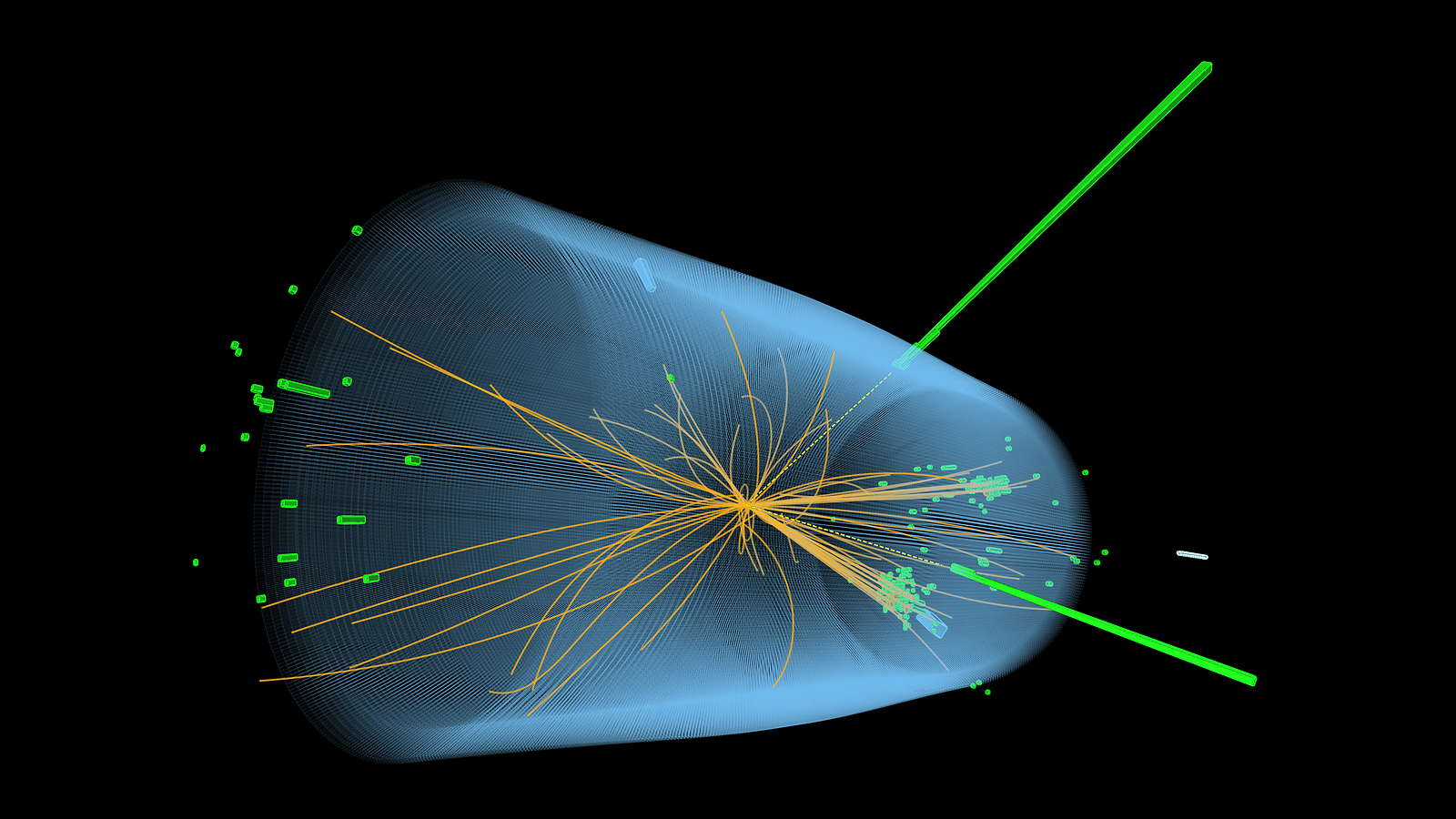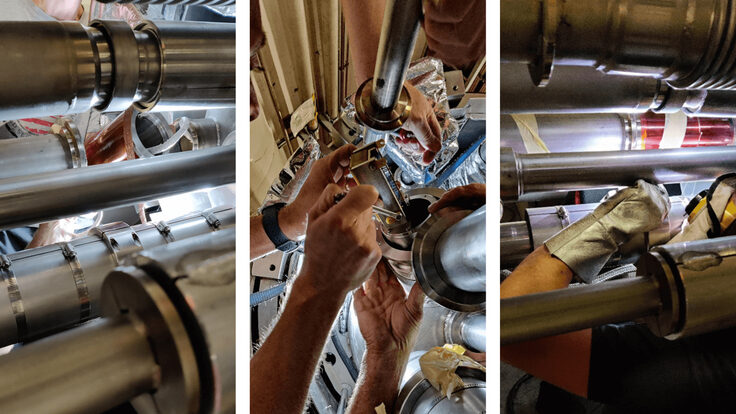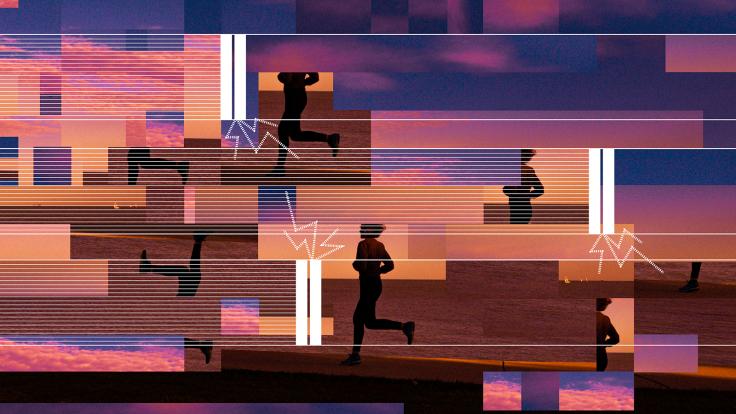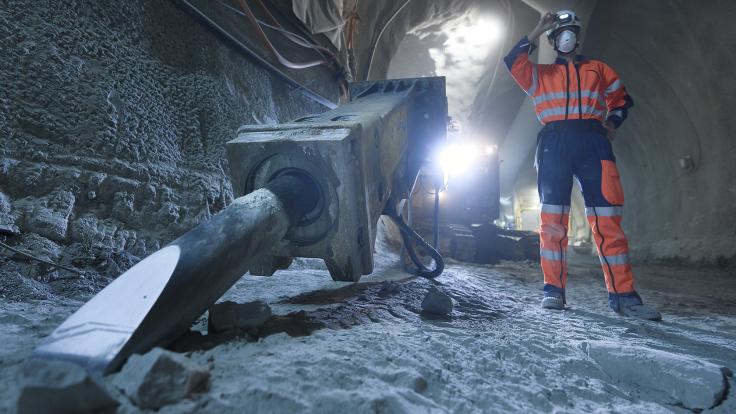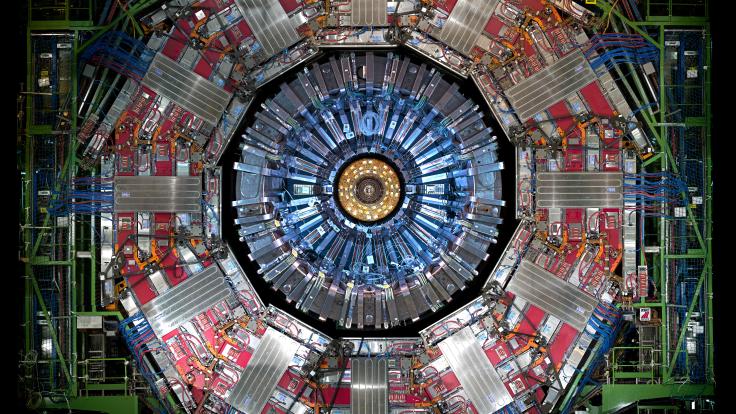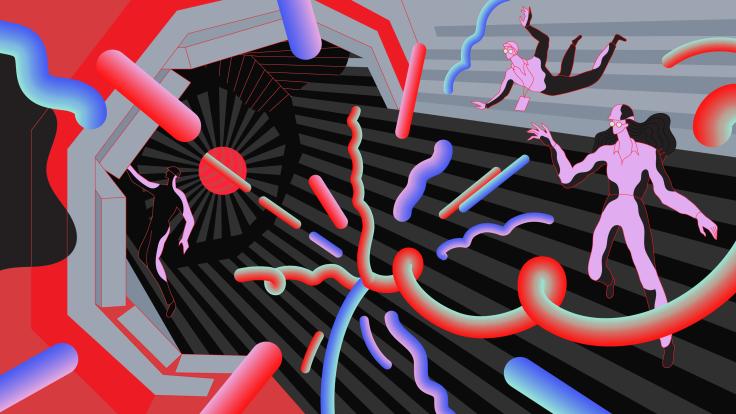I’ll let you in on a little secret: Even though physicists have produced millions of Higgs bosons at the Large Hadron Collider, they’ve never actually seen one. Higgs bosons are fragile things that dissolve immediately after they’re born. But as they die, they produce other particles, which, if they’re created at the LHC, can travel through a particle detector and leave recognizable signatures.
Here’s another secret: Higgs signatures are identical to the signatures of numerous other processes. In fact, every time the Higgs signs its name in a detector, there are many more background processes leaving the exact same marks.
For instance, one of the Higgs boson’s cleanest signatures is two photons with a combined mass of around 125 billion electronvolts. But for every 10 diphotons that look like a Higgs signature, only about one event actually belongs to a Higgs.
So how can scientists study something that they cannot see and cannot isolate? They employ the same technique FBI agents use to uncover illegal money laundering schemes: accounting.
In money laundering, “dirty” money (from illegal activities) is mixed with “clean” money from a legitimate business like a car wash. It all looks the same, so determining which Benjamins came from drugs versus which came from detailing is impossible. But agents don’t need to look at the individual dollars; they just need to look for suspiciously large spikes in profit that cannot be explained by regular business activities.
In physics, the accounting comes from a much-loved set of equations called the Standard Model. Physicists have spent decades building and perfecting the Standard Model, which tells them what percentage of the time different subatomic processes should happen. Scientists know which signatures are associated with which processes, so if they see a signature more often than expected, it means there is something happening outside the purview of the Standard Model: a new process.
Clever accounting is how scientists originally discovered the Higgs boson in 2012. Theorists predicted what the Higgs signatures should look like, and when physicists went searching, they consistently saw some of these signatures more frequently than they could explain without the Higgs boson. When scientists added the mathematics for the Higgs boson into the equations, the predictions matched the data.
Today, physicists use this accounting method to search for new particles. Many of these new particles are predicted to be rarer than Higgs bosons (for reference, Higgs bosons are produced in about one in a billion collisions). Many processes are also less clear-cut, and just the act of standardizing the accounting is a challenge. (To return to the money laundering analogy, it would be like FBI agents investigating an upscale bar, where a sudden excess could be explained by a generous tip.)
To find these complex and subtle signs of mischief, scientists need a huge amount of data and a finely tuned model. Future runs of the LHC will be dedicated to building up these enormous datasets so that scientists can dig through the books for numbers that the Standard Model cannot explain.



